We’ve all heard ‘diamonds are a girl’s best friend.’ Have you pondered what makes a diamond special?
Polishing, my friends, is the answer. Yes, perfecting diamond polishing boosts their beauty and value.
This The Art of Polishing Diamonds to Perfection set by BrighterGuide will guide you through diamond polishing’s grades, considerations, and advice to assist you choose these priceless jewels.
Join me as we discover diamond perfection’s secrets.
Related article: Guide in Choosing the Perfect Metal: Palladium vs. Platinum Wedding Bands
Key Takeaways
- Diamond polishing is vital in enhancing a diamond’s beauty, impacting its light reflection and overall appearance.
- While polish affects a diamond’s look, other factors like cut, color, and clarity play significant roles in determining a diamond’s quality.
- The precision in diamond polishing not only boosts its brilliance but also ensures consistency of finish and carat weight retention.
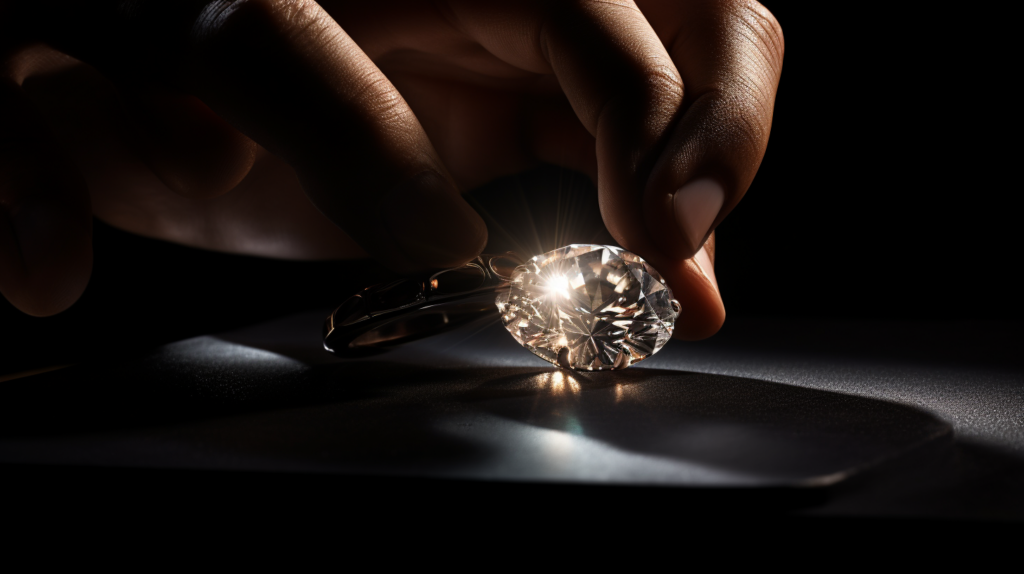
What is Diamond Polish
Polishing a diamond smooths its surface. This is crucial to a diamond’s beauty and value. Diamond cutters determine polish grade during polishing. To achieve polish and symmetry, they meticulously work on the rough diamond.
Excellent polish is the greatest quality. Look for Very Good or Excellent polish when buying a diamond. These grades are most attractive without raising price. Lower ratings like Fair or Poor may appear drab or hazy.
Diamond polish is affected by burn marks, girdle joints, and other surface imperfections. Small polish faults may not be noticeable to the naked eye and won’t damage the diamond’s luster.
It’s more vital to choose a well-cut diamond with plenty of sparkle than the polish grade.
Diamond Polish Grade: Which grade should you choose
When buying a diamond, aim for Very Good or Excellent polish. Diamond polish grade assesses surface smoothness, which affects light reflection. Three crucial points can help you grasp diamond polish grade:
1. Aesthetic Impact: Very Good or Excellent polish diamonds look best without costing much. Lower ratings like Fair or Poor might reduce or impair the stone’s brilliance.
2. Indistinguishable Differences: Excellent, Very Good, and Good polish grades sometimes look the same. Choosing a well-cut diamond with plenty of brightness may be better than paying more for an Excellent polish rating.
3. Price Considerations: Polish grade affects a diamond’s price, but not as much as carat weight or cut. Excellent polish is seen in most Excellent cut diamonds, while Very Good polish is rarer and more valuable. If defects aren’t obvious, a lower polish grade can save money without sacrificing aesthetics.
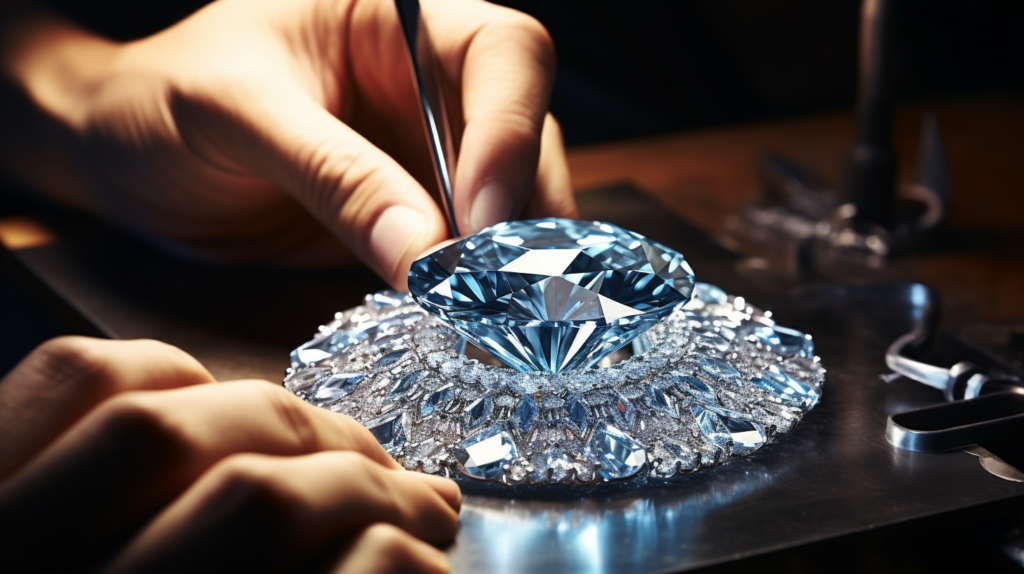
Does Diamond Polish matter
Diamond polish is important in enhancing a diamond’s appearance, but it is not the most important component. Cut, color, and clarity are important diamond grade considerations. A nice polish shouldn’t be disregarded.
Diamond polish refers to its smoothened surface. The diamond’s brightness and glitter depend on how neatly it reflects light. Beautifully polished diamonds provide exceptional optical precision, allowing light to travel through without distortion.
Diamond polish depends on facet structure and symmetry, especially pavilion facets in brilliant cut diamonds. The diamond industry uses polish compounds and methods to polish each facet to perfection, creating a smooth, glossy surface.
Despite not affecting a diamond’s price, polish grade affects its attractiveness. Diamonds with Very Good or Excellent polish reflect light better and sparkle more. However, lower polish grades can look dull or hazy.
Impact of Diamond Polish on Price
We observed that diamond polish doesn’t effect price compared to other attributes. Diamond polish affects price, but the diamond trade values cut and clarity more. However, polish grade affects diamond quality and look.
Consider these crucial points:
To determine a diamond’s polish grade, graders inspect its surface finish under 10x magnification. Unpolished girdles reduce diamond polish. Asymmetrical diamonds or misshapen facets might reduce polish grade. Poor symmetry, especially in pavilion mains, lowers polish grade. Diamond polish treatments smooth and brighten diamonds.
A higher polish rating is ideal, however Excellent, Very Good, and Good grades are sometimes indistinguishable. It may not be worth spending more for an Excellent polish rating unless you have a great eye for detail. Instead, choose a well-cut diamond with great brilliance to enhance its attractiveness.
The polish grade should be evaluated with other factors when determining a diamond’s price.
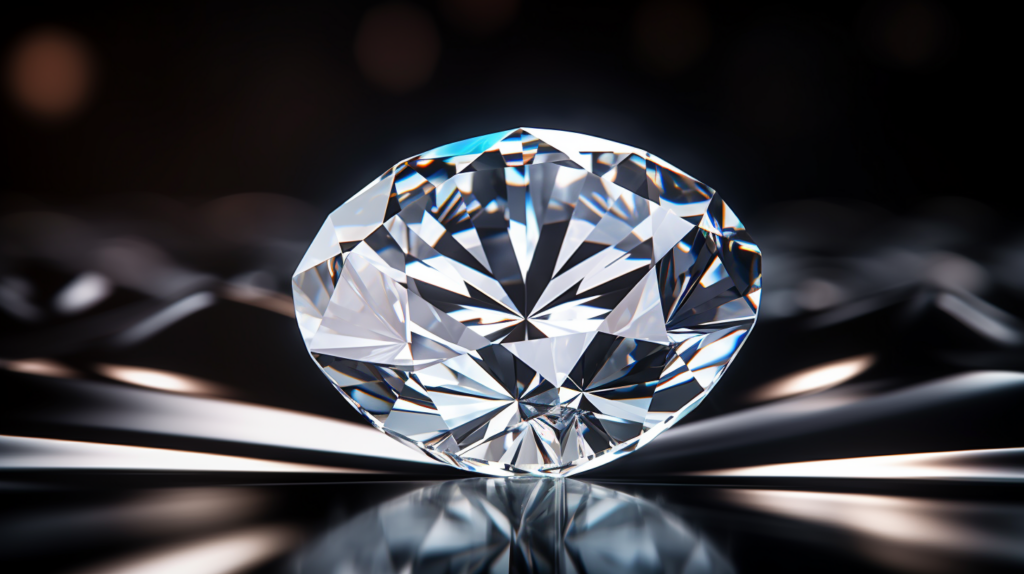
Polish Features
Under magnification, notches, scratches, and polish lines affect the diamond’s polish grade. Diamond smoothness and brilliance depend on certain polish properties. We’ll examine these features in the table below:
| Polish Features | Description | Impact on Polish Grade |
| Notches | Small grooves or indentations found along the facet edges. | Notches can lower the polish grade, especially if they are deep or numerous. |
| Scratches | Thin lines or marks on the diamond’s surface caused by abrasions. | Scratches can impact the polish grade, especially if they are visible to the naked eye. |
| Polish Lines | Fine lines caused by the polishing process. They may appear as faint grooves or wavy patterns. | Polish lines can affect the polish grade, especially if they are prominent or numerous. |
| White Groove | A white line or groove running parallel to the facet junctions. | White grooves can lower the polish grade, especially if they are visible or extensive. |
| Nicks at Facet Junctions | Small chips or irregularities at the points where facets meet. | Nicks at facet junctions can impact the polish grade, especially if they are noticeable or numerous. |
Diamond polishers utilize numerous methods and instruments to polish well. They make a slurry from diamond powder and oil or water. Diamond polishing systems, abrasives, and this slurry erase flaws and smooth surfaces. Maintaining diamond polishing needs accuracy and ability.
Understanding these polish features helps us appreciate the effort required to polish a diamond precisely. By carefully assessing these factors, we can choose a diamond with the desired polish, creating a stunning jewel.
Which is more important – diamond polish or symmetry
The balance between diamond polish and symmetry is important when assessing diamond quality. Diamond appearance and value depend on both variables. Let’s discuss diamond polish and symmetry:
1. Definition of Diamond Polish: – Diamond polish is the smoothness of the diamond’s surface. It improves the diamond’s light reflection and shine.
Excellent or Very Good polish can enhance a diamond’s appearance.
Low polish grades, like Fair or Poor, can look drab or hazy.
However, Excellent, Very Good, and Good polish grades may appear identical.
Buying an Excellent polish grade may not be necessary if the diamond is brilliant.
2. Diamond Symmetry: The alignment and balance of a diamond’s facets and surface characteristics.
It contributes to diamond beauty and harmony.
Symmetry distributes light evenly throughout the diamond, boosting its shine.
Symmetry makes a diamond look good.
However, tiny symmetry changes may not be visible.
3. Finding Balance: Polish affects a diamond’s look more than symmetry.
A diamond with great polish but poor symmetry can nevertheless shine.
To maximize shine and beauty, a diamond’s cut quality—including polish and symmetry—must be prioritized.
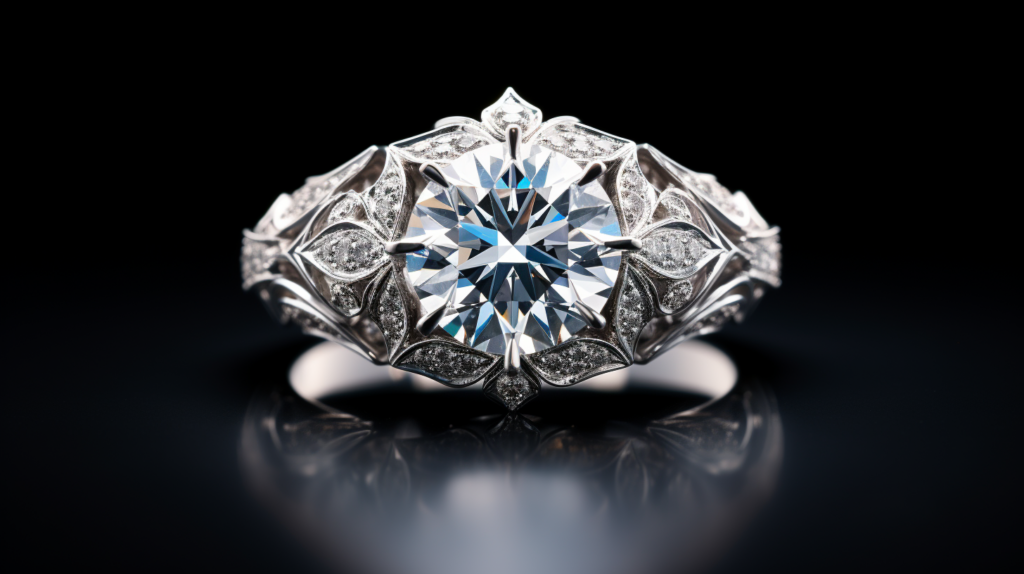
Wondering how to polish a diamond
Diamonds are polished to remove flaws and boost brightness. This critical diamond manufacturing phase requires accuracy and skill. The rough diamond crystal is shaped and polished using lapidary tools like diamond powder and dust. The lapidary craftsman polishes the diamond’s rough edges on a spinning wheel to optimize light reflection. The process can take hours or days, depending on diamond size and complexity.
The lapidary craftsman monitors diamond quality and fluorescence during polishing. Scratches and pits are meticulously removed to provide a smooth surface. The artisan also considers the diamond’s shape and cut grade to establish the best angles and proportions for brightness. This meticulousness enhances the diamond’s attractiveness.
Diamond polishing is a specialist art that takes years of training and practice. Professional lapidary craftsman with the right tools should do it. As a consumer, you may appreciate the expert craftsmanship that goes into diamond polishing, knowing that these procedures turn a rough diamond into a beautiful jewel.
After discussing diamond polishing, let’s move on to some advice and recommendations for diamond enthusiasts like you.
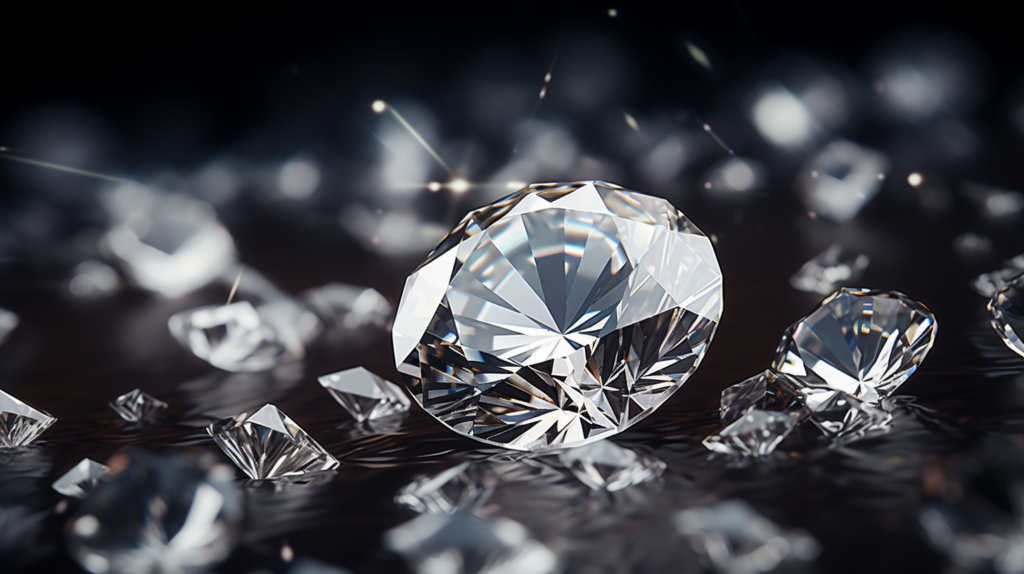
You Might Like
As diamond fans, we appreciate the skill and creativity involved in polishing these exquisite stones. Diamond polishing enhances the stone’s beauty and brightness after cutting.
Here are three reasons to learn about diamond polishing:
1. Enhancing Brilliance: Diamond polishing uses diamond powder to achieve a mirror-like stone gloss. This procedure enhances the diamond’s light reflection and refraction, enhancing its brightness.
2. Consistency of Finish: Polishing smooths the diamond’s surface and removes any imperfections that could influence clarity. Diamond polishers may highlight each stone’s innate beauty by producing a consistent finish.
3. Carat Weight Retention: Skilled diamond polishers attempt to keep as much carat weight as possible while cutting and finishing the diamond. A proper balance preserves the diamond’s value and prevents superfluous material removal during polishing.
Understanding diamond polishing helps us understand the talent and effort required to cut excellent gems. Diamond polishers enhance these stunning diamonds by revealing their brilliance and creating a mirror shine.
Sources
BrighterGuide is dedicated to providing accurate and relevant information as you explore the wonderful world of diamonds and jewelry. To this end, our writers refer to primary information sources in building each article that appears on this website. These include, but are not limited to, published news articles, government portals, research papers, and more.
- Discover the perfect gel polishes for trendsetters at Cosmoprof Las Vegas 2023. (n.d.). https://www.cosmeticsbusiness.com/news/article_page/Discover_the_Perfect_Gel_Polishes_for_Trendsetters_at_Cosmoprof_Las_Vegas_2023/209851
- The largest diamond of its type ever to come to auction. (2017, October 28). Christie’s. https://www.christies.com/en/stories/the-largest-diamond-of-its-type-ever-to-come-to-auction-cb73d5c757ec47f9bbcf6b7ff9f44721